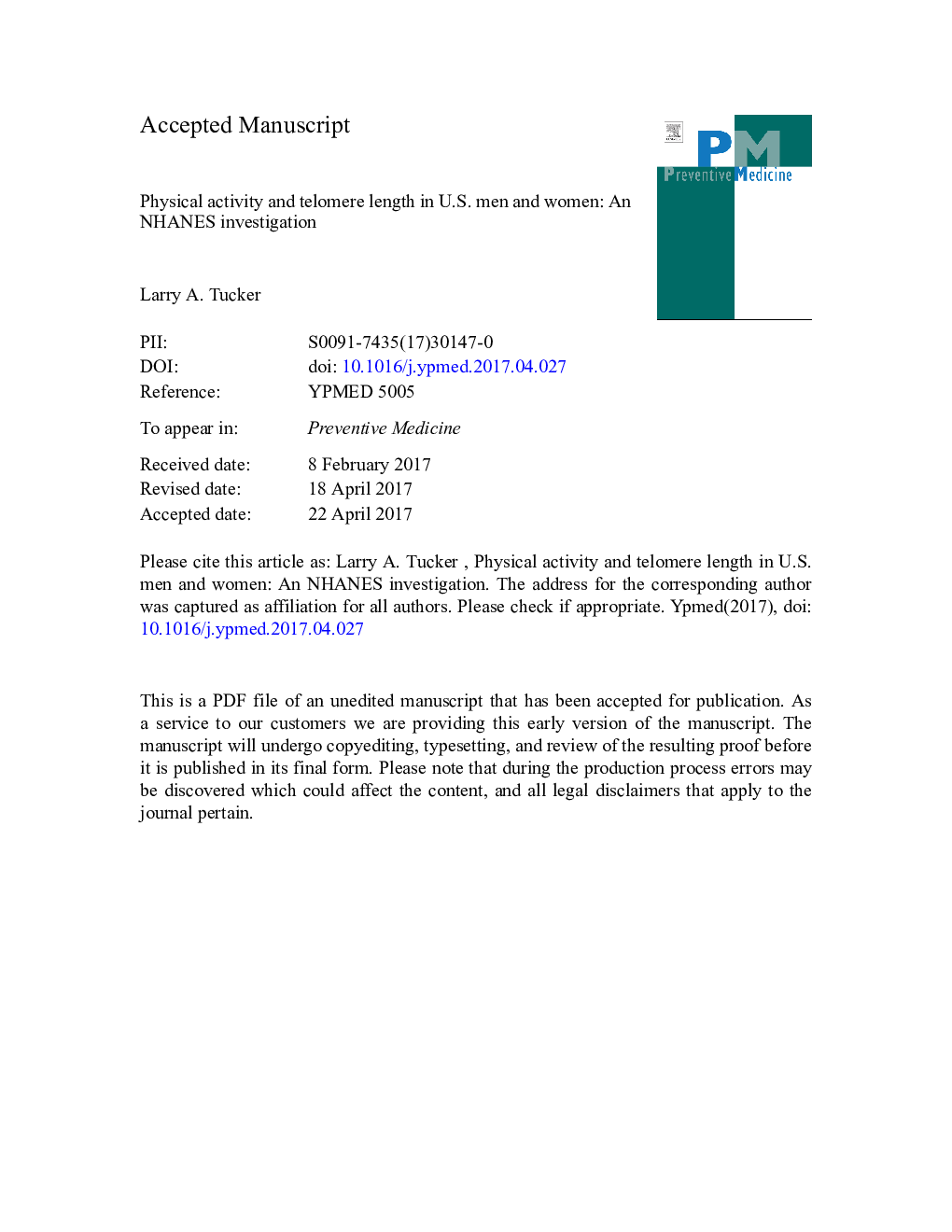| Article ID | Journal | Published Year | Pages | File Type |
|---|---|---|---|---|
| 5635613 | Preventive Medicine | 2017 | 25 Pages |
Abstract
The principal objective was to determine the extent to which physical activity (PA) accounts for differences in leukocyte telomere length (LTL) in a large random sample of U.S. adults. Another purpose was to assess the extent to which multiple demographic and lifestyle covariates affect the relationship between PA and LTL. A total of 5823 adults from the National Health and Nutrition Examination Survey (NHANES 1999-2002) were studied cross-sectionally. Employing the quantitative polymerase chain reaction method, LTL was compared to standard reference DNA. PA was indexed using MET-minutes using self-reported frequency, intensity, and duration of participation in 62 physical activities. Covariates were controlled statistically. Telomeres were 15.6 base pairs shorter for each year of chronological age (F = 723.2, P < 0.0001). PA was inversely related to LTL after adjusting for all the covariates (F = 8.3, P = 0.0004). Telomere base pair differences between adults with High activity and those in the Sedentary, Low, and Moderate groups were 140, 137, and 111, respectively. Adults with High activity were estimated to have a biologic aging advantage of 9 years (140 base pairs ÷ 15.6) over Sedentary adults. The difference in cell aging between those with High and Low activity was also significant, 8.8 years, as was the difference between those with High and Moderate PA (7.1 years). Overall, PA was significantly and meaningfully associated with telomere length in U.S. men and women. Evidently, adults who participate in high levels of PA tend to have longer telomeres, accounting for years of reduced cellular aging compared to their more sedentary counterparts.
Related Topics
Health Sciences
Medicine and Dentistry
Complementary and Alternative Medicine
Authors
Larry A. Tucker,
